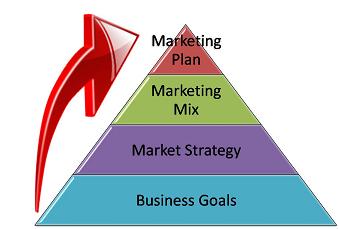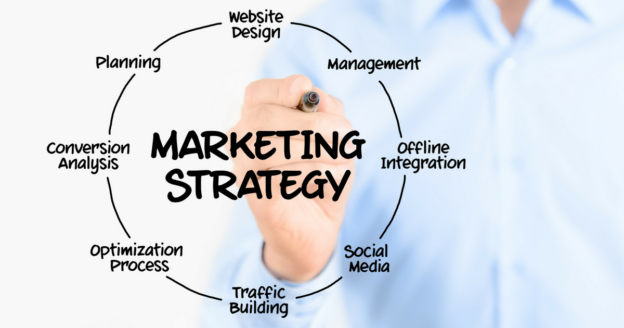Quick Summary: If you are looking to get more leads, you don’t need to spend a lot of money. You just need to commit to a handful of proven strategies that actually work. By understanding the definition of a sales lead, the importance of lead generation for your business, and how to get more leads for free, you’ll be on your way to larger profits and less stress.
What is a sales lead?
A sales lead is any potential client who you can directly contact. They might be a former customer or someone looking for the products and services you provide who is in contact with you.
You probably have more sales leads than you’d think. If you have a loyalty program, those members who have given you contact information are all sales leads. That’s because you can reach out to them and make offers that could lead to a sale.
Sales leads aren’t just individuals. They can also be businesses.
It’s important to remember that sales leads are more than potential customers who know about your business. A sales lead is far more powerful. They have given you contact information, and so you can actually communicate with them directly.
This is why sales leads are a critical part of direct marketing — where a promotional message is given directly to someone, often with some level of customization involved.
What is an example of a sales lead?
Let’s say you have an email newsletter that people can sign up for on your website. Anytime someone signs up for that newsletter, they become a sales lead.
On the other hand, say you work primarily B2B. Let’s say you attend a convention and meet a potential client. If they give you their card — that’s a sales lead.
What does lead generation mean?
Lead generation refers to anything you do that gets potential customers engaged with your business. Once they start interacting with you, they easily convert into sales leads.
Keep reading to learn 20 powerful ideas for lead generation.
Can you get more leads for free?
There are many ways to generate leads — some cost money while others are completely free. With lead generation, spending more money doesn’t always mean better results. Often, attracting potential customers with high quality content is one of the best ways to catch their attention.
That being said, paying money for the right marketing services or for the right information can be well worth the investment.
How to Generate More Leads
Below are 20 great ideas to start generating leads. You’ll notice that not every idea will work for every business. And of course, no business should try 20 new sales lead ideas at once! But there are enough to give you at least two or three places to start.
Generate Leads With Social Media
1. Social Media Ads
Social media platforms make it easy and relatively inexpensive to advertise your products and services.
Many small business owners like social media ads because of how much control these platforms give you. For instance, if you only serve your local area, you can be extremely targeted to your geographic area.
2. Influencer Marketing
Influencers can be a great way to generate leads with social media. That’s because the people who follow influencers are generally interested in the topics that those content creators are known for. If your business aligns with those topics, it can be a beautiful relationship.
The one caveat here is that in the world of social media influencers, you will usually have to pay to get good coverage.
3. LinkedIn Lead Generation
Believe it or not, LinkedIn is a great place to generate leads. You market yourself directly to professionals, and you can pinpoint your audience with a high degree of accuracy (using factors like location and industry).
When you generate leads with LinkedIn, you leverage the specific user base they have as well as their wealth of information.
4. Use User-Generated Content (UGC)
While many of these strategies have you creating things for customers, you can also make use of content your customers create. For instance, online reviews are free ways to promote your business.
Some brands do a great job engaging their fans this way, especially on social media platforms. And this is a goldmine for them, as UGC marketing is very trustworthy.
Generate Leads With Search Engines
5. Use Search Engine Optimization on Your Website (SEO)
SEO is a set of tools that make search engines like Google and Bing place your website high on relevant search results. This gets you organic traffic — visitors who come to your website without you having to spend any money.
SEO best practices include:
- fast-loading pages
- interesting content
- multimedia (images and video)
- meaningful use of keywords (the phrases people use to search)
- well-structured pages
- content that others sites link to (called backlinks)
You can spend a small fortune to have experts get your website’s SEO in top shape, but many of the most effective techniques can be done in an afternoon by yourself. And this is a field where the old phrase “buyer beware” is king. Companies like Google do not publish details on just exactly how their search engine works, and many people claiming to know everything about it are selling snake oil.
That being said, this is still an important part of any company’s online presence. SEO lead generation works because people searching for the products and services you provide will easily find your link and click on it.
6. Pay-Per-Click Advertising on Search Engines
Advertising on Google and Bing is one way to generate more traffic to your website. And if your website can convert visitors into sales leads, this can be quite effective. Think of it like paying for great SEO, because these engines will place you at the top of the list (along with a tag telling users that the listing is a paid ad).
One issue is that you have to pay every time someone clicks on your link — so you better be sure your website can turn enough of these clicks into clients to make it all worth it. Plus, people might not click your link because they see it is paid for. So while it can reliably drive traffic, you should probably try implementing SEO techniques first to get free clicks.
Generate Leads With Ads and Offers
7. A/B Test CTAs in Your Promotional Material
A call to action (CTA) is any design element that gets people to do something right away — like click a link or buy something.
A/B testing means giving half of your audience one version (Version A) and the other half a different version (Version B). If you track which customers saw what version, you can quickly see what marketing is more effective for you.
So you can rapidly improve any promotional material you have by A/B testing it. This helps you land on your best approach to gaining leads fast, and because you’ll have hard numbers backing it, you’ll be able to confidently invest in promotional material at larger scales — supercharging its effectiveness.
8. Discounts and Coupons
This is a tried-and-true way to create interest in potential customers while also attracting back former customers. But it’s important that you don’t simply give out discounts with no strategy. To really generate long-term leads, consider giving discounts if people join your email list or customer appreciation program.
9. Send Offers Through Your Email List
Creating an email list is a great way to continuously provide new offers to those who are interested in your company and what it does.
It not only leverages these leads, it also continually gives people value for engaging with your brand.
10. Personalized Email Marketing
Personalized email marketing means creating emails specifically for an individual or a subset of your customers. Rather than blasting all of your email list with the same material, email marketing platforms allow you to use a much more customized approach.
Generate Leads With Content Marketing
11. High-Value Content
Providing high-value content for free is a great way to earn people’s trust and bolster your brand recognition.
Content could include:
- helpful blog posts
- YouTube tutorial videos
- infographics on social media
By being informative and entertaining, people will want to stay engaged with your brand. They’ll also share your content, essentially marketing your company for you.
12. Offer Free Tools and Free Trials (Freemium Model)
The freemium model gives potential customers limited parts of their product for free. Then, some portion of people who get the free version will choose to upgrade, creating a pipeline for sales.
As you’ll notice, this only works for some products and services. Many software and SaaS companies offer a limited version of their program or a trial version so people get a no-risk look at what they’d be buying. Similarly, many content creators will offer free content while also keeping their best stuff behind a paywall.
13. Start a Podcast / Go on Podcasts
Podcasts are big — about 100 million people are expected to listen to podcasts over the next year. That’s a lot of potential customers. If you start a successful podcast in your field, you’ll generate a built-in audience that you can market to directly.
But let’s be realistic. Not everyone has the energy, time, or interest to start a podcast and do what it takes to make it successful. That’s okay! You can still benefit from their popularity. It starts with finding podcasts that cover topics in your field. Reach out to the creators and request an interview. If they interview you, you’ll be able to promote your company to a whole new audience.
14. Write Guest Blogs
Guest blogging means you contribute to another website. In turn, that website’s audience gets a chance to see what you are all about and maybe click over to your business website.
This is especially useful if your personal expertise is a major part of your company’s appeal.
15. Answer Questions on Sites Like Reddit and Quora
If you run a business, chances are you have expertise in something. You can use that to generate leads by answering questions people have on forums like Reddit and Quora.
Just make sure your answer is genuinely helpful. Then if you link to your business, it comes off as more genuine.
Other people searching Google for similar questions will often wind up on those same Reddit and Quora pages — and you’ll be positioned as the expert.
Generate Leads With Connections
16. Start Referral Partnerships
Referral partnerships are agreements between businesses to refer customers to each other, and they are true win-win scenarios.
If your customer pool overlaps but you don’t directly compete, it can instantly drive up sales for both businesses.
17. Get Referrals From Current Customers
Referral rewards are a way to incentivize your current customers to tell people they know about your business. This can be really effective when you consider how much more importance people place on word of mouth over simple advertising.
18. Direct Engagement With Potential Customers
Direct engagement means reaching out and talking to potential customers. It isn’t quite cold calling, because you’ll have some idea they might be in the market.
This works great if your business runs on high-value sales, and it works even better if you predominately work in B2B, as you can find business email addresses and phone numbers to contact them.
19. Host a Training Event or Webinar
This is another way to use your expertise for good. Sharing what you know in a public event draws people interested in your products and services. You create a positive connection to your brand while also engaging a wide range of potential customers who have the chance to become real sales leads.
20. Networking Events
Networking events is a powerful way to generate leads — especially for B2B clients. If your business serves as a vendor for other companies, networking can be a great way to make sales leads.
Face-to-face, personal connections are the highest quality sales lead imaginable.
Final Thoughts
These 20 ways to get sales leads should put you in the right direction.
Still not sure how to generate more leads, or want even more free advice? Consider reaching out today for free business advice. I can help you tailor the above strategies and more to your specific business.









